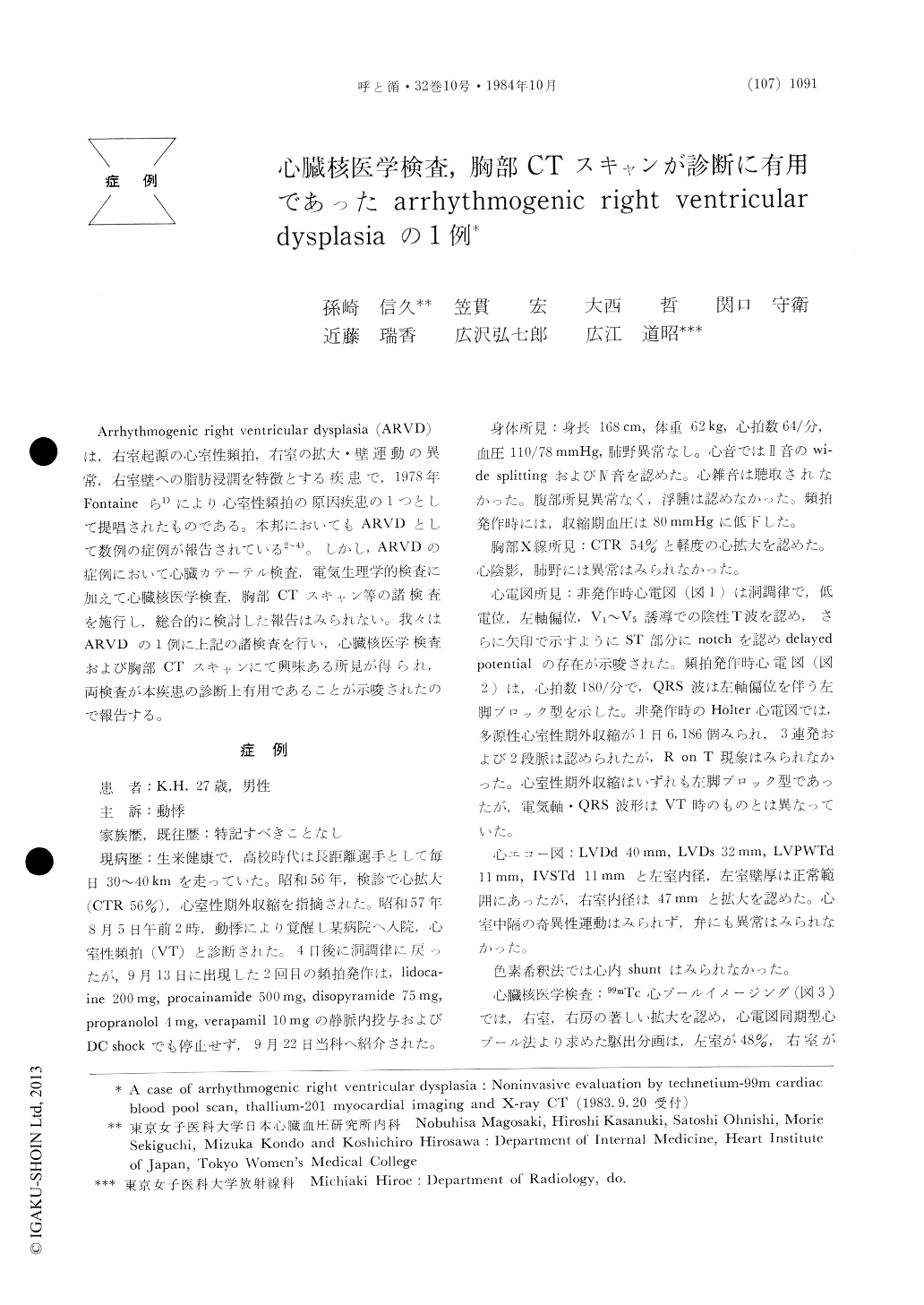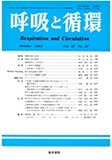Japanese
English
- 有料閲覧
- Abstract 文献概要
- 1ページ目 Look Inside
Arrhythmogenic right ventricular dysplasia (ARVD)は,右室起源の心室性頻拍,右室の拡大・壁運動の異常,右室壁への脂肪浸潤を特徴とする疾患で,1978年Fontaineら1)により心室性頻拍の原因疾患の1つとして提唱されたものである。本邦においてもARVDとして数例の症例が報告されている2〜4)。しかし,ARVDの症例において心臓カテーテル検査,電気生理学的検査に加えて心臓核医学検査,胸部CTスキャン等の諸検査を施行し,総合的に検討した報告はみられない。我々はARVDの1例に上記の諸検査を行い,心臓核医学検査および胸部CTスキャンにて興味ある所見が得られ,両検査が本疾患の診断上有用であることが示唆されたので報告する。
Arrhythmogenic right ventricular dysplasia (ARVD) is a clinical entity characterized by predominantly right-sided cardiomyopathy associ-ated with ventricular tachycardia (VT). We reported a case of ARVD, in which the diagnostic usefulness of radionuclide cardiac blood pool scan, myocardial imaging and X-ray CT was suggested. A 27-year-old man was referred in September, 1982 for evaluation and treatment of recurrent sustained VT. Physical examination was unre-markable except for the wide splitting of the second heart sound and the presence of the fourth heart sound. Chest X-ray films showed mild cardiomegaly (CTR 0.54). An ECG during sinus rhythm showed low voltage, left axis deviation, inverted T waves in leads V1 to V5 and a slight notching on the ST seg-ment (postexcitation potential). The VT had a rate of 180/min and the QRS complexes of the VT show-ed a left bundle branch block configuration with left axis deviation. Technetium-99 m gated cardiac blood pool scan revealed a dilated hypokinetic right ventricle (RV) with a ejection fraction of 0.09. Thallium-201 myocardial imaging showed diminished tracer uptake in the RV wall, which suggested pathology in the RV myocardium. On X-ray CT, the CT number of the RV free wall was low (-60 Hounsfield units), suggesting fatty infiltra-tion in the free wall. At cardiac catheterization, the mean right atrial pressure was 9 mmHg, the RV pressure was 29/5 mmHg, the RV end diastolic pressure was 13 mmHg, the pulmonary artery pressure was 23/13 mmHg and the left ventricular end diastolic pressure was 12 mmHg. A right ventriculogram showed dilatation of the RV with a marked reduction in its contraction. The left ventricule and the coronary arteries were normal. Endomyocardial biopsy of the RV showed degenera-tion of the cardiac myocytes associated with massive fibrosis and fatty infiltration. In a electrophys-iologic study, endocardial mapping of the RV during sinus rhythm demonstrated delayed po-tentials near the tricuspid annulus. The clinically observed VT was induced by the ventricular extrastimulus technique. The site of the earliest activation during VT was correlated to the site where delayed potentials were recorded. The results of our study suggested the value of the combined use of technetium-99 m gated cardiac pool scan, thallium-201 myocardial imaging and X-ray CT in the noninvasive diagnosis of patients with ARVD.

Copyright © 1984, Igaku-Shoin Ltd. All rights reserved.


